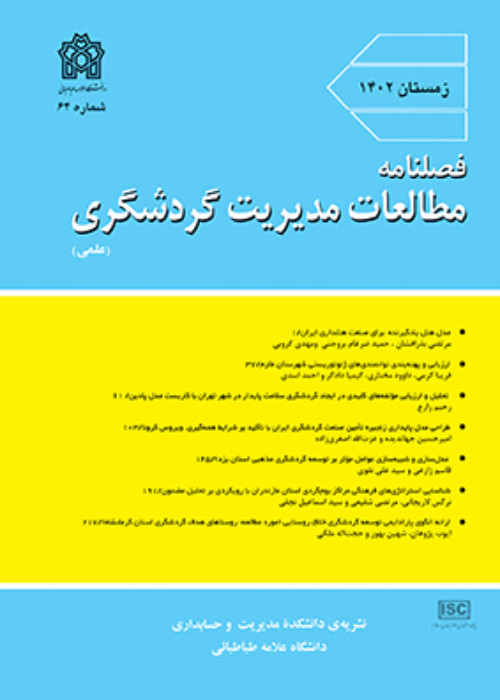Identifying the Elements of the Experience of Local Food in Tourism
Relying on the distinctive aspects of tourism destinations is a prerequisite for success in the tourism market. Local food and local food culture are typical factors and lasting competitive advantages For tourism destinations because of emulating-oriented problems. The experience of eating local food and learning about local food culture in tourism is not a new phenomenon. Still, in recent years the competition in the tourism market has increased its importance. In practice, there are very successful examples of the application of local food tourism in the form of cooking festivals around the world, while not much research has been done in this field (Ellis, 2018). This study aims to identify the elements involved in creating the desired experience in eating local food tourism.
The statistical population of this study is the members of the customer club of a tourism agency located in Tehran, and the sampling method is non-random; the sample size includes two hundred people. This study used the memory-work method for research on elements of desirable local food tourism. The memory-work process has three steps. In the first step, data were collected with an open-ended question: "Briefly describe your most desirable eating local food experience while traveling" (Stone et al., 2018). At this step, respondents must meet four preconditions. These four prerequisites include Narrating a story about a question, narrating in the third person, going into detail, and describing experiences (Crawford et al., 1992); In the second step, coding of the text of the stories must be done. Coding is done to identify the main elements of the subject; And in the third step, the specified components are divided into several categories (Onyx & Small, 2001).
Findings showed that desirable local food tourism elements are divided into three categories: food-related, related to people, and related to the place. Among the identified elements related to food, three elements of fresh food, natural food, and various foods to describe the raw materials used in cooking local food, well-matured food elements to explain how to cook local food. Two elements of hot food and A traditional dish are used to describe how local food is served. Three elements of meat taste, familiar taste, and old taste have been used to describe the taste of the desirable experience of eating local food in tourism. Two elements of rice and bread smell have been used to describe the scent of desirable experience of eating local food in tourism.Regarding the type of food, dairy products are mentioned, directly and indirectly, meat, rice, and bread are mentioned. Among the identified elements related to people, the three elements of ethnicity, ancestors, and acquaintances with the highest repetition rate express a sense of belonging due to past regret in human relationships in the desirable experience of local food tourism. The three elements of friends, spouse, and children describe the sense of belonging that comes from familiarity in human relationships in the desirable experience of local food tourism. The two elements of locals and new people also describe the sense of excitement of meeting new people in human relations in the desirable experience of local food tourism. The element of intimacy indicates the type of relationship that people want in the desired experience of local food tourism. Among the identified elements related to the place: Nature landscape describes visual pleasure; fresh air describes olfactory pleasure; two elements of rain and animal sounds, specifically birds' voice, describe auditory delight; and three elements of rain, cold weather describe tactile pleasure in the desired experience of eating local food in tourism. The six elements of the local house are the table, the rain, the mountains, the forest, and the desert to describe the desirable experience of spending local food on tourism.
Due to the climatic diversity of Iran and the diversity of local food culture in Iran, it is expected to identify a wide and scattered range of elements related to the desired experience of local food tourism. The results showed that despite the climatic diversity and regional food culture diversity in Iran, Iranians have very similar ideas about the desired experience of eating local food tourism. The potential to use local food in Creating a sustainable competitive advantage for tourism destinations should be considered by activists in the tourism industry, Due to the climatic diversity of Iran, diversity in the preparation of raw materials, variety in cooking local food in different parts of Iran, and the existence of relatively independent food cultures there.
- حق عضویت دریافتی صرف حمایت از نشریات عضو و نگهداری، تکمیل و توسعه مگیران میشود.
- پرداخت حق اشتراک و دانلود مقالات اجازه بازنشر آن در سایر رسانههای چاپی و دیجیتال را به کاربر نمیدهد.


